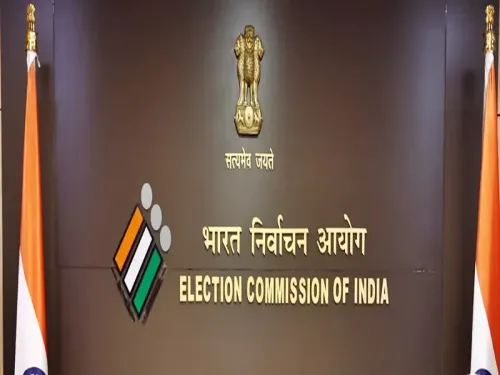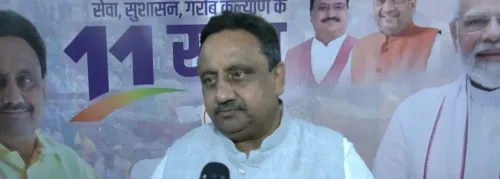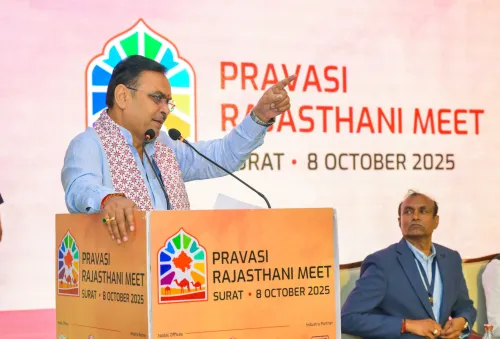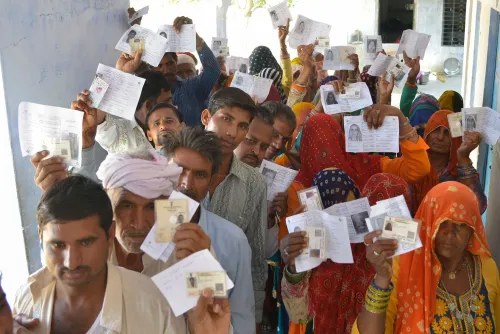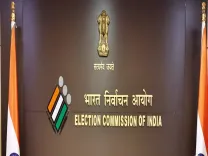Is India Set to Become the Third-Largest Economy by 2030, Surpassing Germany?
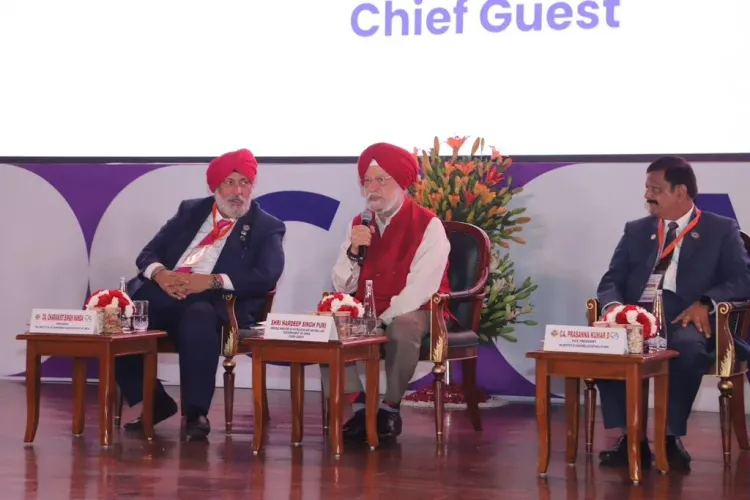
Synopsis
Key Takeaways
- India is set to become the third-largest economy by 2030.
- GDP is projected to exceed $4.3 trillion by 2025.
- 27 crore citizens lifted from poverty through welfare programs.
- Significant foreign direct investment growth of 143%.
- Adoption of AI is crucial for future competitiveness.
New Delhi, July 2 (NationPress) India has recently surpassed Japan and is on track to become the third-largest economy by 2030, overtaking Germany, as stated by Union Petroleum Minister Hardeep Singh Puri.
In the last 11 years, India has advanced from the eleventh to the fourth largest economy globally.
“Our GDP has more than doubled — from $2.1 trillion in 2014 to $4.3 trillion by 2025,” Puri remarked during the 77th Foundation Day of the Institute of Chartered Accountants of India (ICAI).
The minister emphasized the nation’s resilience amid global challenges and the pivotal role of bold policy reforms, comprehensive social welfare programs, and effective financial management.
Under flagship social initiatives, Puri pointed out that over 27 crore citizens have been lifted out of multidimensional poverty, nearly four crore houses have been approved under the Pradhan Mantri Awas Yojana, and 15.4 crore rural households now benefit from piped water through the Jal Jeevan Mission.
“Ayushman Bharat has extended health coverage to over 70 crore individuals with a Rs 5 lakh insurance benefit, demonstrating India’s commitment to inclusive development,” the minister added.
He underscored India’s success in attracting global investments, with $748 billion in foreign direct investment inflows between 2014 and 2025 — a surge of 143 percent compared to the previous decade — with the number of source countries increasing from 89 to 112.
“Key policy reforms such as the Insolvency and Bankruptcy Code, Production-Linked Incentive schemes, Goods and Services Tax, Direct Benefit Transfers, and the elimination of over 25,000 compliance requirements and 1,400 outdated laws have bolstered the business environment,” the minister stressed.
The transformation in tax administration highlights India's evolving financial culture.
Annual Income Tax returns filed rose from 3.6 crore in FY 2013–14 to 8.5 crore in FY 2024–25, with 95 percent processed within 30 days.
“Every return and every rupee of tax collected results in tangible benefits—LPG connections for mothers, medicines for the underprivileged, electricity for rural homes, pensions for the elderly, and employment opportunities for youth,” Puri emphasized.
Looking forward, the minister urged chartered accountants to adopt artificial intelligence and advanced analytics, automating routine tasks to focus on strategic advisory roles and utilizing data-driven insights for better decision-making.
“Embracing AI is no longer optional — it is essential for maintaining competitiveness and innovation in today’s dynamic financial landscape,” he concluded.

